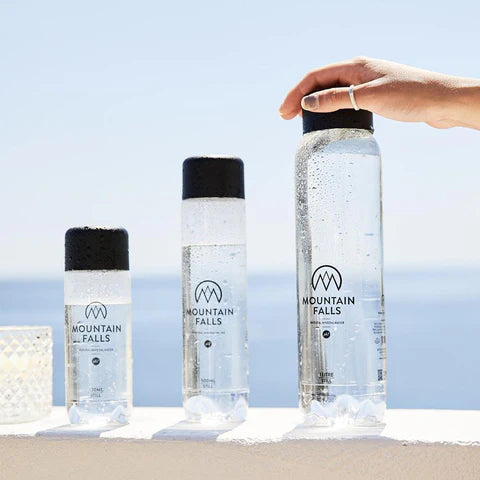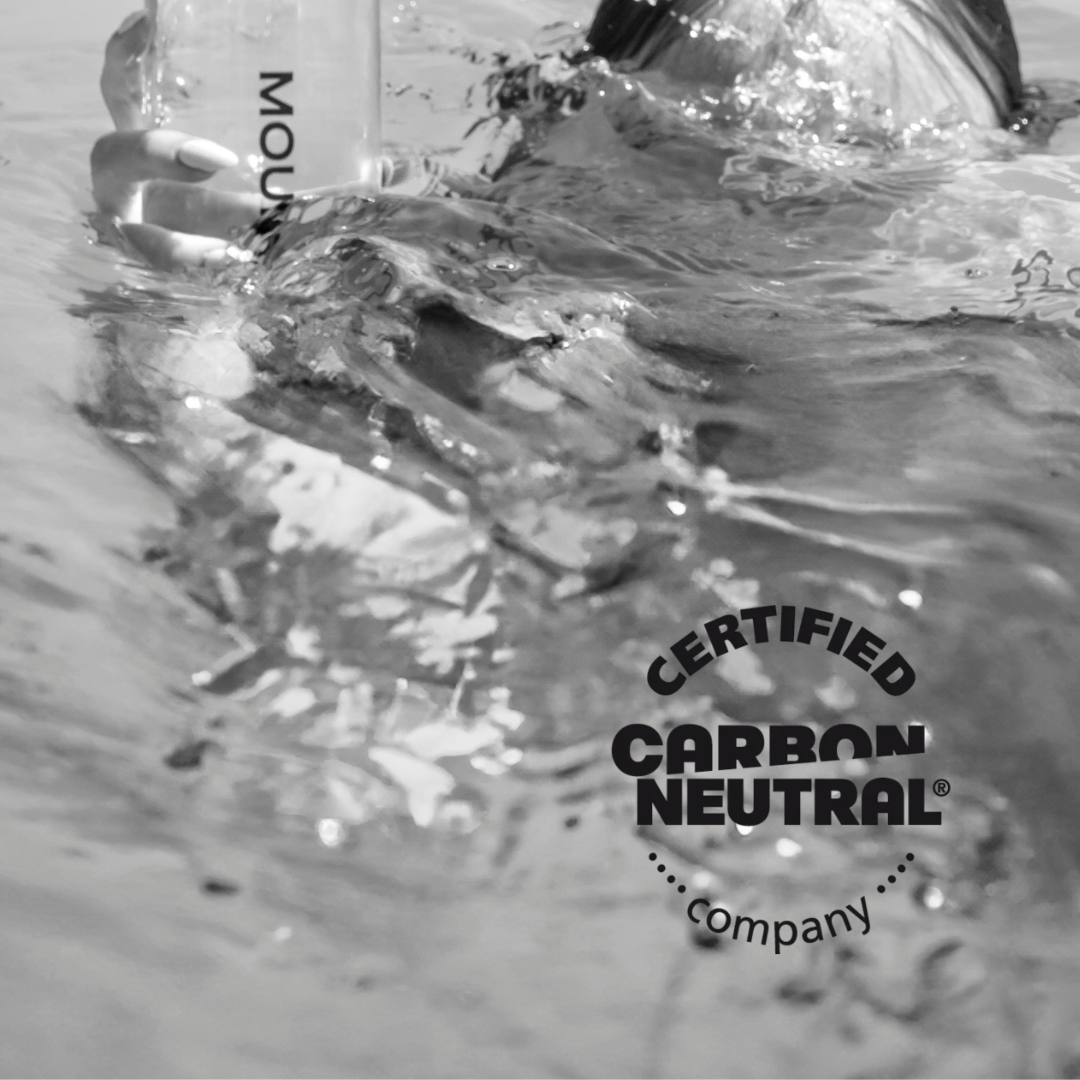You've likely come across various types of water, each claiming to be the purest or boasting unique pH levels. But how do you determine the best pH for drinking water and which sources to trust? Understanding the pH level of your water is crucial as it influences its taste, odour, and ability to dissolve minerals.
In South Africa, where water quality varies significantly from urban to rural areas, knowing the pH of your drinking water can be especially important. Water with a pH level between 6.5 and 8.5 is generally considered safe, but deviations can impact your health and the water's overall quality. Whether you're sourcing water from a local spring, a municipal supply, or even bottled options, it's essential to be informed about the pH level to ensure you're consuming the best quality water possible.

Key Takeaways
-
Ideal pH Range: Drinking water should have a pH level between 6.5 and 8.5, ensuring safety, good taste, and minimal impact on plumbing systems.
-
Health Implications: Water with low pH can cause pipe corrosion and metal leaching, while high pH may result in a bitter taste. Both extreme pH levels can have negative health effects.
-
Testing Methods: Regular testing of water pH using litmus paper, electronic pH meters, or testing kits helps maintain water quality.
-
Bottled Water pH: Bottled water pH varies widely; selecting brands that fall within the ideal pH range enhances taste and meets safety standards.
-
Natural vs. Artificial Alkaline Water: Natural alkaline water often offers better mineral content, while artificially alkaline water is produced through electrolysis. Both should be monitored for pH stability.
-
Environmental Impact: Maintaining balanced pH levels in water is crucial for the health of aquatic life and ecosystems, as well as for preventing pipe corrosion and heavy metal contamination.
What is pH?
pH measures the acidity or alkalinity of water on a scale ranging from 0 to 14. Water with a pH of 7 is neutral. Values lower than 7 indicate acidity, while those higher than 7 indicate alkalinity. The pH scale is logarithmic, so each unit change represents a ten-fold difference in acidity or alkalinity.
In the context of drinking water, the pH directly affects both taste and mineral content. South African water sources like municipal supplies and natural springs show varied pH levels. Understanding these values helps you select water with the best quality for consumption.
Ideal pH for Drinking Water
The ideal pH for drinking water usually falls between 6.5 and 8.5. Within this range, water is safe for consumption and poses no immediate health risks. Tap water in South Africa typically has a pH around 7.5, reflecting a neutral to slightly alkaline nature.
Effects of pH on Water Quality
Low pH (acidic water) can lead to corrosive pipes and leaching of metals like copper and lead, affecting water quality. High pH (alkaline water) often results in a bitter taste and scale formation on appliances. Balanced pH water, falling within the ideal range, ensures better taste and minimal impact on plumbing systems.
Testing the pH of Your Drinking Water
To test the pH of your drinking water, use litmus paper, electronic pH meters, or pH testing kits. These methods provide accurate readings, helping ensure the water you're drinking is within the ideal pH range. Regular testing of pH levels in both tap and bottled water is essential for maintaining quality.
pH Levels in Bottled Water
Bottled water in South Africa varies widely in pH. For instance, natural spring water like Mountain Falls usually maintains a balanced pH, contributing to its clean taste and beneficial mineral content. Comparing pH levels in bottled water helps you choose the option best suited to your health requirements.
Alkaline Water vs. Acidic Water
Alkaline water (pH above 7) offers potential health benefits like neutralising acid in your bloodstream and improving hydration. However, it’s essential to balance these claims with realities, as highly alkaline water can still pose some risks. Conversely, acidic water is generally unsuitable for regular consumption due to corrosion risks and potential health issues.
Why pH Matters in Drinking Water
The pH of drinking water holds significance due to its impact on taste and mineral content. Drinking water typically falls within a pH range of 6.5 to 8.5. When evaluating the safety and health benefits, it's important to consider pH as part of a larger quality assessment, rather than an isolated factor.
Effects of pH on Water Quality
While the impacts of pH on human health are minimal, pH can affect water quality in other ways. If water is too acidic (below 6.5), it can corrode pipes and leach metals like lead and copper into the water. This leads to potential health risks, especially for infants and young children. Conversely, highly alkaline water (above 8.5) might result in a bitter taste, though it poses no health hazards.
Alkaline Water vs. Acidic Water
The debate between alkaline and acidic water often centres around their perceived health benefits. Alkaline water has a pH greater than 7 and is touted for benefits like improved hydration and acid-neutralising properties. However, scientific evidence does not strongly support these claims. Acidic water, with a pH below 7, rarely poses direct health risks since the acids are extremely weak and dilute. For instance, natural spring water, such as the Mountain Falls water pH, typically stays within a safe and neutral range.
Importance in Bottled Water
Many bottled waters in South Africa, such as those provided by Mountain Falls, fall within the ideal pH range of 6.5 to 8.5. This ensures they meet both taste and safety standards. Try to choose water with a balanced pH to ensure you get both taste satisfaction and minimal health risks. Natural spring water pH levels naturally sit around this range, making them a favourable choice.
Best Practices for Consumers
To maintain the best pH level for your drinking water, regularly testing it can help. You can use pH testing kits available in stores. For most households, the municipal water supply provides a safe pH, but if you source water from private wells or springs, consistent testing becomes more crucial. Understanding how pH levels affect drinking water ensures you make informed choices for your health and wellbeing.
pH Levels of Common Types of Water

Understanding the pH levels of various water sources helps you make informed choices about what you drink. Different water types exhibit distinct pH values, each impacting taste, quality, and potential health benefits. Here's an overview of common water types and their pH levels:
-
Tap Water
-
Highly variable, averaging around pH 7.5. South African tap water is generally safe, though pH may fluctuate based on local water treatment processes.
-
Distilled Water
-
Typically has a pH ranging from 5.8 to 7. Distillation removes impurities, but also strips away beneficial minerals.
-
Bottled Water
-
Varies significantly, with pH levels between 5 and 10. It's essential to check the pH on the label, especially for brands like Mountain Falls water, which aims to provide a balanced pH.
-
Ocean Water
-
Maintains a pH between 8 and 8.1. Not suitable for drinking, but useful for understanding the high alkalinity of natural sea water.
-
Sparkling Water
-
pH ranges from 4.5 to 6. Carbonation introduces carbonic acid, lowering the pH slightly compared to non-carbonated water.
-
Iceberg Water
-
Typically between pH 6 and 8. Rarely consumed, but notable for its purity and near-neutral pH.
-
Mineral Water
-
pH levels from 5.5 to 8.5. Contains dissolved minerals like calcium and magnesium, which can influence the pH. Mineral-rich waters like those from Mountain Falls often offer slight alkalinity.
-
Spring Water
-
Generally maintains pH between 6.5 and 8.5. Often considered ideal for everyday drinking due to its balanced mineral content.
-
Artesian Water
-
pH varies based on ground geology, typically between 6.5 and 8.5. Known for being naturally filtered and mineral-rich.
-
Alkaline Water
-
Typically around pH 8 to 10. Promoted for its potential health benefits, it's thought to neutralise acidity in the body.
Natural vs. Artificially Alkaline Water
Natural alkaline water originates from sources like springs or wells, collecting minerals such as calcium, magnesium, and bicarbonates. This type of water often displays a pH level exceeding 7, a trait resulting from its journey through mineral-rich rocks. Notable South African examples include the Mountain Falls spring water, which boasts a naturally balanced pH.
Artificially alkaline water is created via a process known as electrolysis, where electrolytic cells ionise regular water. This method elevates the pH level, theoretically offering the same health benefits as natural options. However, some proponents argue that natural alkaline water might provide better mineral content since it's sourced directly from nature.
Health Benefits of Alkaline Water
Alkaline water advocates claim various health benefits, including improved hydration. The higher pH level may help neutralise stomach acidity, providing relief from acid reflux. Alkaline water is also believed to possess antioxidant properties, although this remains under scientific review. When comparing alkaline water vs. acidic water, the former is generally favoured due to these purported advantages.
Environmental Impact
The environmental impact of sourcing natural alkaline water involves careful management of natural springs to avoid depletion. Sustainable practices, such as those employed by Mountain Falls, ensure that water sources are not over-exploited, preserving them for future generations. Artificially producing alkaline water, on the other hand, relies on processes that can be energy-intensive but allows for controlled production without tapping into natural resources.
pH Levels in Natural and Artificially Alkaline Water
Natural alkaline water tends to have a stable pH level, reflecting its consistent mineral content. In contrast, artificially alkaline water's pH levels can vary depending on the electrolysis process used. Monitoring the pH of your drinking water is crucial for ensuring quality and health benefits. For instance, Mountain Falls water pH is naturally stable owing to its pristine source and balanced mineral content.
Considerations for South African Consumers
When choosing between natural and artificially alkaline water, consider both the environmental impact and the source's sustainability. Natural options like Mountain Falls spring water offer a reliable pH balance and come from renewable sources. Testing pH levels, whether natural spring water pH or artificial, ensures you're consuming balanced pH drinking water, which is ideal for maintaining health.
How pH Affects the Environment
The pH of water plays a crucial role in the surrounding environment. Variations in pH levels can significantly influence aquatic life and ecosystem health.
Effects on Aquatic Life
Aquatic life is extremely sensitive to changes in water pH. Most fish species thrive in a pH range of 6.5 to 8.5; deviations from this range can harm their health and breeding capabilities. For example, a pH level below 6.0 can cause stress to fish, leading to decreased reproduction rates and growth.
Algae Blooms
Algae blooms are another environmental consequence of altered pH levels. High pH conditions, often resulting from excessive nutrients in the water, can promote algae growth. These blooms can deplete oxygen levels, causing harm to aquatic organisms and disrupting the balance of the ecosystem.
Soil and Plant Health
Water pH also impacts soil quality and plant health. Acidic water (pH below 7) can leach essential nutrients from the soil, affecting plant growth. Conversely, alkaline water (pH above 7) can cause certain minerals to become less available to plants, leading to nutrient deficiencies.
Heavy Metals and Corrosion
Low pH drinking water can increase the corrosion of pipes, releasing harmful heavy metals like lead into the water supply. This has serious implications for both human health and the environment, as these metals can accumulate in soil and water bodies.
Sustainable Water Sources
Choosing water sources with a balanced pH, like natural spring water, helps in maintaining environmental sustainability. Mountain Falls spring water, for instance, offers a stable pH that supports both human health and the ecosystem. Sustainable water management practices ensure that the pH levels of water sources remain within the ideal range for ecological balance.
Testing and Monitoring
Regular testing and monitoring of water pH are essential for environmental protection. By assessing pH levels, you can identify potential issues early and take corrective actions to mitigate negative impacts.
Maintaining a balanced pH in water bodies is crucial for supporting diverse and healthy ecosystems. Understanding and addressing the environmental effects of water pH can lead to more sustainable practices and better outcomes for both nature and human communities.
Testing and Regulating pH in Drinking Water
Testing and regulating pH in drinking water ensures its safety and quality. Testing the pH of your drinking water is straightforward with pH testing kits available in stores or online. These kits typically include pH strips or meters that measure the pH level within seconds. Regular testing helps maintain balanced pH levels, promoting both health benefits and environmental sustainability.
South African regulations, set by the Department of Water and Sanitation, mandate that the pH levels of drinking water should be between 6.0 and 9.0. This range ensures the water does not harm pipes, appliances, or, most importantly, consumers. Municipal water systems, including those utilising natural springs like Mountain Falls, regularly monitor and adjust pH to comply with these standards.
To regulate pH levels, water treatment facilities use chemical additives like lime, soda ash, or acids. This process stabilises the pH, improving taste, reducing pipe corrosion, and ensuring the water remains safe to drink. While natural spring water pH varies, processed bottled water often advertises a balanced pH to attract health-conscious consumers.
Spring water brands, such as Mountain Falls, may naturally have a stable pH due to the mineral composition of the source. These waters not only meet regulatory requirements but also offer balanced pH drinking water, which can be beneficial for maintaining overall health. High-quality brands often provide pH information on their labels, making it easier for you to select water that suits your preferences.
The pH scale for drinking water runs from 0 to 14, with 7 being neutral. Values below 7 indicate acidity, while those above 7 indicate alkalinity. The ideal pH level for drinking water typically falls between 6.5 and 8.5. This range aligns with most natural spring water pH levels, offering a good balance between taste and health benefits without causing potential harm to your body or home plumbing systems.
By understanding how to test and regulate pH levels, you can ensure your drinking water remains within the optimal range, supporting both your health and the environment. Regularly consuming water within the ideal pH range promotes the overall benefits of drinking water with balanced pH, contributing to a healthier lifestyle.
Conclusion
Understanding the pH levels of your drinking water is essential for maintaining your health and the environment. Staying within the safe range of 6.5 to 8.5 ensures water quality and prevents potential health issues. Whether you prefer naturally alkaline water or opt for bottled water, always check the pH levels to make informed choices. Regular testing and adherence to regulations help maintain optimal water quality. By prioritising balanced pH levels, you're not only safeguarding your well-being but also contributing to environmental sustainability.
Frequently Asked Questions
What is the ideal pH range for drinking water?
The ideal pH range for drinking water is between 6.5 and 8.5. This range is considered safe for human consumption and helps ensure the water is neither too acidic nor too alkaline.
What are the health effects of drinking water with a low pH?
Drinking water with a low pH (acidic water) can lead to acid reflux, frequent heartburn, and might even corrode certain metals it touches. Acidic water also tends to taste unpleasant.
How does high pH water affect health?
High pH (alkaline) water is not generally harmful but can cause dry, itchy, and irritated skin. Some companies claim health benefits, but it's essential to balance pH levels for overall well-being.
Should I choose natural or artificially alkaline water?
Natural alkaline water gets its minerals from the environment and is considered more beneficial. Artificially alkaline water is altered through a process and may not provide the same health benefits.
How can I test the pH level of my drinking water?
You can test the pH level of your drinking water using pH testing kits available at most hardware stores or online. These kits provide a quick and easy way to ensure your water is within the safe pH range.
What are the regulations for pH levels in drinking water?
In South Africa, the Department of Water and Sanitation sets regulations to keep drinking water pH levels between 6.5 and 8.5. Water treatment facilities use chemical additives to maintain these standards.
Why is maintaining the pH level in drinking water important?
Maintaining the pH level in drinking water is crucial for personal health and environmental sustainability. Proper pH levels help prevent health issues and support balanced ecosystems.
What pH level is typical for bottled water?
Typical bottled water pH levels range from 6.5 to 7.5. Bottled waters labeled as alkaline usually have pH levels between 8 and 9.
Who offers bottled water with naturally stable pH levels?
Brands like Mountain Falls offer bottled water with naturally stable pH levels due to their mineral composition, promoting balanced pH drinking water for better health benefits.



